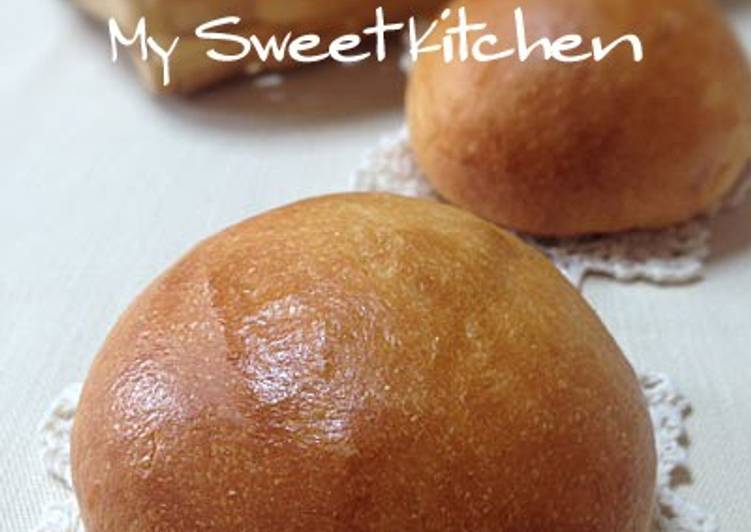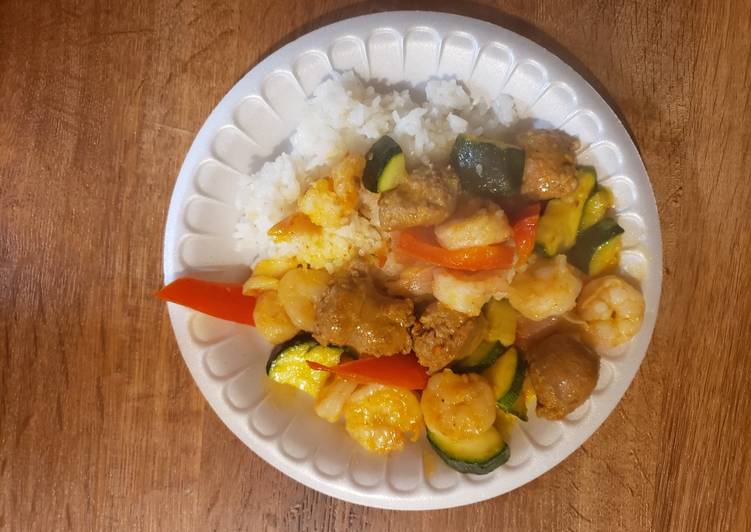
Hey everyone, I hope you’re having an amazing day today. Today, we’re going to prepare a distinctive dish, easy hand kneaded basic sweet bread dough. It is one of my favorites. For mine, I am going to make it a bit unique. This is gonna smell and look delicious.
Great recipe for Easy Hand Kneaded Basic Sweet Bread Dough. The secret to the recipe is the hands-off approach. For an easy no knead bread you simply do just that: no kneading.
Easy Hand Kneaded Basic Sweet Bread Dough is one of the most popular of recent trending foods in the world. It’s appreciated by millions every day. It is simple, it’s fast, it tastes yummy. Easy Hand Kneaded Basic Sweet Bread Dough is something that I have loved my entire life. They are fine and they look fantastic.
To get started with this particular recipe, we must first prepare a few ingredients. You can cook easy hand kneaded basic sweet bread dough using 9 ingredients and 34 steps. Here is how you can achieve that.
The ingredients needed to make Easy Hand Kneaded Basic Sweet Bread Dough:
- Make ready 130 grams Bread flour "A"
- Make ready 30 grams All purpose flour "A"
- Take 20 grams Almond powder "A" (optional. If not adding, there's no need to increase the amount of other dry ingredients. The wetness of the dough will be adjusted with the amount of milk.)
- Make ready 30 grams Butter (or margarine)
- Take 2 tbsp Sugar
- Make ready 1/3 tsp Salt
- Take 1 Egg yolk
- Take 1 use 90 ml or more when adding almond powder to the dough. Milk (substitute 20 ml of the milk with heavy cream if available. This makes the bread even more delicious)
- Prepare 2 1/2 grams Dry yeast
Add the flour, one cup at a time, stirring until incorporated. Doubling and tripling the Basic Dough recipe gives you many possibilities. For example, you may choose to make less loaves and more rolls. The following charts will help you know what the recipe will yield.
Steps to make Easy Hand Kneaded Basic Sweet Bread Dough:
- Put all of the "A" ingredients in a bowl, make a well in the center, then add the dry yeast into the well.
- To the side of the mound of dry ingredients furthest from you, place the salt, then on the side closest to you, place the sugar. Then, divide the butter softened at room temperature in two portions, and place one to the right, and one to left side of the mound.
- Mix together the milk and egg yolk and warm it to approximately 40 degrees (using a microwave or a double boiler).
- If warming in a pan, warm the milk first, then remove the pan from the fire, allow it to cool to the touch, then add the beaten egg.
- The dry yeast will not leaven if it is either too hot or too cold. Make sure that the liquid mixture is about 35-40 degrees.
- Pour the liquid mixture from Step 3 into the well over the dry yeast in one go.
- Put your index finger of your dominant hand in the well and thoroughly mix. Gradually incorporate the dry ingredients from the outside of the well into the center, a little at a time.
- Once all of the ingredients are thoroughly moistened, mix the dough in the bowl. I mix using my hands, but I also recommend using a spatula.
- Once the dough comes together, press down on it using your palm, round it out, then press down on it again. Repeat this process for about 5 minutes, kneading the dough in the bowl.
- Place the dough from Step 9 on your working surface. This process may be exhausting but it will become easier once you get used to it. Hang in there if this is new to you.
- They are many ways to knead, so I'm not sure which method to suggest. I recommend referring to your favorite bread baking book.
- The way I do it is as follows: I grip the dough with my dominating hand and press it away from my body while leaning into it to stretch it.
- Again, grab the dough and slam it on your working surface from a height of about 30 cm, with a snap of your wrist.
- Do not let go of the dough when slamming it on your working surface. It's difficult to tell from the photo, but it's like playing with a yo-yo.
- If you let go of the dough in Step 14, it will take longer to complete the kneading process. The dough will not stay smooth forever.
- Repeat Step 12 and 13 about 100 times, kneading it in several directions. It's not necessarily how many times you knead it, but it's ready once the dough stops sticking to your hand.
- The dough should become smooth and become very elastic, creating a thin film when stretched. Along with the tip mentioned in Step 16, this is a sign that the dough is ready.
- To demonstrate what the dough should look like when ready, I stretched it over a cup in the above photo. As long as you give it your best effort, your dough should eventually reach this point.
- Lightly grease a bowl with oil and form the dough into a smooth, round ball. Place the dough in the bowl with the seam down.
- I use the proofing function on my oven to let it proof 30 to 40 minutes at 38 degrees Celsius, but you can also place it in a warm location where it will not dry out.
- Perform the finger test: Once the dough has risen, coat your index finger in cake flour and poke the center of the dough. If the dough doesn't return to it's former shape, it's done rising.
- If the dough springs back to it former shape, it's not finished proofing. If baked at this point, the bread will turn out hard and heavy, so let it rise a little bit more.
- Punch down the dough with your fist to deflate the dough. One time is sufficient.
- Re-shape the dough into a ball, then, with the smooth surface showing, cover it with a tightly wrung out cloth and let it sit for 15 minutes.
- Use the dough to make your favorite bread. Then, allow the dough to sit for the second proofing.
- I don't have any special equipment for the second proofing, so I loosely cover the dough arranged on a baking sheet in a large transparent plastic bag, making sure the dough does not stick to the plastic.
- Then, I let it proof using the proofing system on my oven (20-30 minutes at 38 degrees Celsius). For baking, I recommend an oven temperature of 190C/375F.
- With my electric oven, I baked the bread for 15 minutes on the center rack. It also depends on the size of the bread (the bread in the photo is made from about 50 g of dough each).
- I explained how to knead by hands, but of course, you can also use bread machine. This recipe makes a very rich, fluffy, and delicious dough.
- The dough from user Kamomemama's "Fold-in Mango Bread" was delicious, so I added almond flour to my recipe.
- With only a small amount of almond powder, the dough becomes more flavorful, but it is completely optional.
- According to a friend who is a bread baking instructor, this ratio of ingredients is easy for beginners to handle. Try it yourself and see.
- Here is another recipe using this dough: Loveable Caramel Cinnamon Rolls - - https://cookpad.com/us/recipes/144094-caramel-cinnamon-rolls
- Is a recipe for Rich Cinnamon Rolls like a dessert. - - https://cookpad.com/us/recipes/144091-dessert-cinnamon-rolls
Add small spoonfuls of flour as necessary, until the dough is soft and smooth (not sticky to the touch). You may not need all of the flour, or you may need a little more. Keep the surface floured to prevent the dough from sticking to the board and your hands. Kneading dough by hand can be messy, and many home cooks add a lot of extra flour, which can compromise the texture of the baked loaf. Now mist the bowl with a little non-stick spray, and pop the dough back in.
So that’s going to wrap this up with this exceptional food easy hand kneaded basic sweet bread dough recipe. Thanks so much for your time. I am confident you can make this at home. There is gonna be interesting food at home recipes coming up. Remember to save this page in your browser, and share it to your family, colleague and friends. Thanks again for reading. Go on get cooking!

